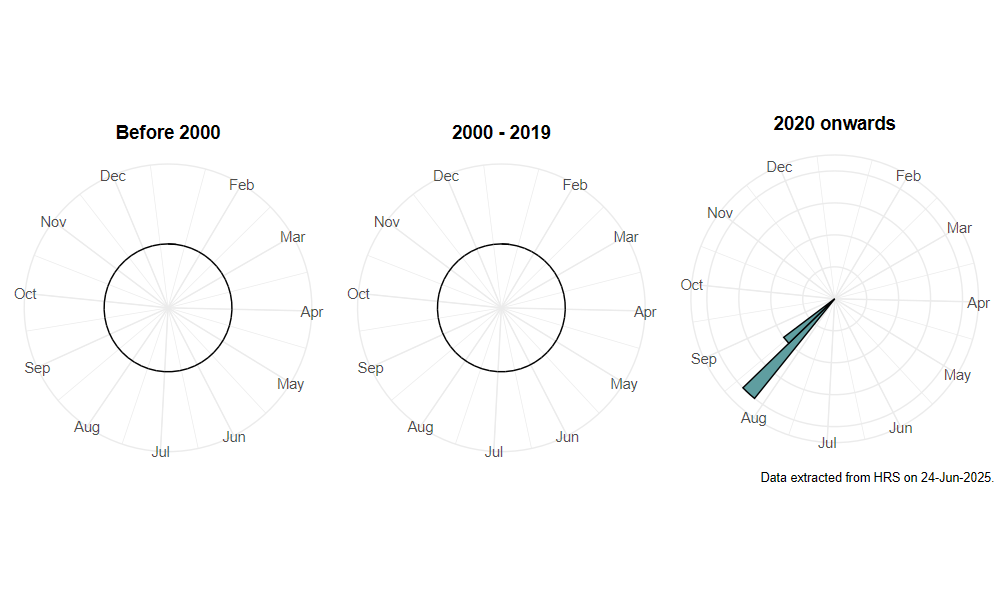Eumerus narcissi Smith, 1928
Identification
Identification difficulty = 4. ### Description Eumerus narcissi Smith, 1928 was added to the British list, based on five male specimens taken from two sites on St. Mary’s, Isles of Scilly in 2022, and single male specimens taken from two sites on the Cornish mainland in 2020 and 2022 (Thomas, et al., 2023)1. This is a member of the Eumerus strigatus group of species, which now comprises E. funeralis, E. strigatus, E. sogdianus and E. narcissi on the British list. Apart from E. funeralis, these can only be distinguished by examining the male genitalia.
Biology
Eumerus narcissi has been reared from Narcissus bulbs on multiple occasions in America. There are also specimens in American collections purportedly reared from Hippeastrum and 'onion' (presumably Allium cepa) (Speight et al. 2013)2 suggesting that while Narcissus is the main host, E. narcissi can develop on other families of bulbs. Information on the specific Narcissus taxa involved in these rearing records is mostly lacking.
Flight period
The following plots show the number of unique records per week excluding those reported to be of immature stages.

Status
It seems likely that this species arrived in Scilly and west Cornwall via imported bulbs probably from France, but (less likely) from America.
Distribution
Eumerus narcissi was first described from California by Smith (1928)3. Given that the genus is not native to the Americas, Smith assumed that E. narcissi was an introduced species in California and suggested that it was likely of European origin. It was not recorded in Europe until 2014 when specimens were collected in southern France (Speight et al., 2013)2. It has subsequently been found in other locations in southern France and also in Corsica.

-
Thomas, J., Harrow, M., & Falk, S. (2023). Eumerus narcissi Smith (Diptera, Syrphidae) confirmed as British from the Isles of Scilly and mainland Cornwall. Dipterists Digest (Second Series), 30(2), 134–139. ↩
-
Speight, M., Hauser, M., & Withers, P. (2013). Eumerus narcissi Smith (Diptera, Syrphidae), presence in Europe confirmed, with a redescription of the species. Dipterists Digest (Second Series), 20(1), 17–32. ↩ ↩
-
Smith, L. (1928). Distinction between three species of Eumerus (Syrphidae, Diptera), with description of a new species. Pan-Pacific Entomologist, 4, 137–139. ↩